(published April 2024)
The two s-process branching points 134,135Cs and 89,90Sr are affecting the s-only 134Ba/136Ba ratio and the mostly s-produced 90,91Zr/94Zr ratios. Accelerator Mass Spectrometry (AMS) measurements of small concentrations of 90Sr and 135Cs can provide direct evaluations of the thermal neutron capture cross sections 134Cs(n,γ)135Cs and 89Sr(n,γ)90Sr, which can serve as an anchor point for estimating the critical neutron capture cross section in the keV region.
The double neutron capture process on 88Sr can be evaluated measuring the isotopic ratio 90Sr/88Sr using
![]()
for irradiation times t comparably short to the half-life of 89Sr (t1/2 ≈ 55 days). The equation can be written similarly for cesium, where the half-life of 134Cs is much longer with t1/2 ≈ 2 years.
The two short-lived isotopes 135Cs (t1/2= (2.3±0.3) Myrs; [Singh et al., 2008]) and 90Sr (t1/2= (28.888±0.038) yrs; [MacMahon, 2006]) can be measured with the Ion-Laser InterAction Mass Spectrometry (ILIAMS) [Martschini et al., 2022] setup at the University of Vienna, which suppresses the interfering isobars 90Zr and 135Ba via ion-gas and ion-laser interaction, respectively. The ions are electrostatically decelerated and further cooled in a gas-filled radiofrequency quadrupole (RFQ). There, they are overlapped with a high-intensity continuous wave-laser beam.
In the case of 90Sr, the buffer gas is He+O2, which produces oxide ions such as O-ZrF3– inside the RFQ. SrF3– does not react with the O2 gas and can, therefore, be used for 90Sr measurements. In the case of 135Cs, the interfering barium isotope is suppressed via laser-photodetachment. The molecule 135BaF2– is indistinguishable from 135CsF2– in a conventional mass spectrometer but the surplus electron has a much lower binding energy (0.8 eV vs. 3.8 eV, respectively). By overlapping these ions with a laser beam with a photon energy in between those two binding energies and on a timescale of milliseconds, the BaF2– molecules are neutralized while the CsF2– molecules are unaffected [Wieser et al., 2023]. After the gas reaction cell, the ions are accelerated again and injected into the conventional AMS setup at the Vienna Environmental Research Accelerator (VERA). With the combination of ILIAMS and AMS we reach a limit of detection of 3·107 135Cs atoms and 1.3·105 90Sr atoms per sample, respectively. Thus, ILIAMS-assisted AMS is the most sensitive analysis method available for these two radionuclides.
In the case of 90Sr, this enables us to measure the double thermal neutron capture despite the low cross section for the first 88Sr(nth,γ)89Sr reaction (9 mbarn). For cesium, the thermal neutron capture cross section on 133Cs is much larger (29 barn) but also the limit of detection for the AMS measurements is two orders of magnitude higher than for 90Sr measurements, mostly limited by intrinsic 135Cs in commercial Cs materials. Hence, until now no suitable target material for an irradiation has been found. Most promising seems to be a Cs containing mineral, e.g., pollucite (Cs,Na)2Al2Si4O12·2H2O), which should be free of any 135Cs. This will be investigated in the coming months.
Chemical separation of both nuclides from complex matrices were developed, until now mainly for environmental studies [Honda et al., 2022a/b]. Major steps involved are for 90Sr:
- A dedicated “SR Resin” (Triskem) using a crown-ether (4,4’(5’)-di-t-butylcyclohexano-18-crown-6) diluted in octanol as an extractant;
- SrF2 precipitation in small volumes (<0.7 ml) in 8% HF;
- Mixing with PbF2 (1:8 by weight) and pressing in Cu cathodes. Special attention has to paid for Ca- and K-rich matrices asking for, e.g., SrCO3-precipitaion as a preconcentration step before applying the “SR Resin”.
For 135Cs major steps involved are:
- A dedicated “AMP-PAN RESIN” (Triskem) or AMP precipitation, which are both based on ammonium phosphomolybdate (AMP) complexing Cs;
- Ion exchange to separate Mo from the decomposition of the AMP;
- Evaporation to dryness of the Cs-containing fraction in the absence of NH4+ and NO3–;
- Mixing with PbF2 (1:3 by weight) and pressing in Cu cathodes.
However, especially the extraction of Cs from a complex sample matrix is still under investigation, mainly due to the absence of an insoluble Cs compound for a final precipitation (see 3.).
The chemical suppression of Ba and Zr resulted in 135Ba/133Cs=2·10–8 and 90Zr/88Sr=1·10–7, which yields combined with the strong isobar separation described above these low detection limits for both, 90Sr and 135Cs.
References:
Honda et al. (2022a) Novel 90Sr analysis of environmental samples by Ion-Laser InterAction Mass Spectrometry, https://doi.org/10.1039/D2AY00604A.
Honda et al. (2022b) Challenging studies by accelerator mass spectrometry for the development of environmental radiology. Status report on the analysis of 90Sr and 135Cs by AMS, https://jopss.jaea.go.jp/pdfdata/JAEA-Conf-2022-001.pdf (p. 85 – 90).
MacMahon (2006) Half-life evaluations for 3H, 90Sr and 90Y, https://doi:10.1016/j.apradiso.2006.02.072.
Martschini et al. (2022) 5 years of Ion-Laser Interaction Mass Spectrometry – Status and prospects of isobar suppression in AMS by lasers, https://doi.org/10.1017/RDC.2021.73.
Singh et al. (2008) Nuclear Data Sheets for A=135, https://doi.org/10.1016/j.nds.2008.02.001
Wieser at al. (2023) Determination of 135Cs and 137Cs in environmental samples by AMS, https://doi.org/10.1016/j.nimb.2023.02.013.
